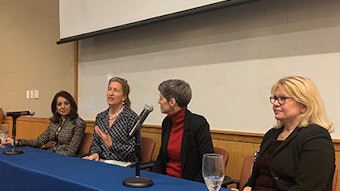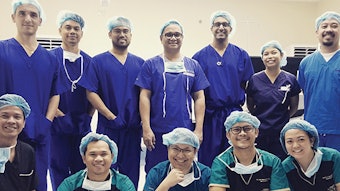Intraoperative Sentinel Events: Righting Wrongs or Ticking Boxes?
Time-out protocols and checklists are now widely used in efforts to deter sentinel events in the operating room. Academy members were queried about their experiences, affording insights into what is happening in otolaryngology-head and neck surgery. In the survey, 543 Academy members shared their experiences relating to sentinel events that continue to occur in the modern operating room.
Out of Committee: Patient Safety and Quality Improvement
John D. Cramer, MD, Karthik Balakrishnan, MD, Michael J. Brenner, MD, and Soham Roy, MD
Time-out protocols and checklists are now widely used in efforts to deter sentinel events in the operating room. Academy members were queried about their experiences, affording insights into what is happening in otolaryngology-head and neck surgery. In the survey, 543 Academy members shared their experiences relating to sentinel events that continue to occur in the modern operating room. The survey asked about wrong site, wrong patient, and wrong procedure errors; surgical fires; inadvertent administration of wrong medication; and retained surgical items. The full quantitative analysis of the survey will be described in an upcoming publication; however, several broad themes emerged from dozens of free text responses and these are shared in this article.
Checklist Use
Surgical safety checklists have been adopted nearly universally, although components vary across institutions. Widely used components include the following:
- Preoperative marking of surgical site
- “All Stop” to direct attention to the checklist
- Time-out to confirm correct patient identification, correct procedure site, and correct procedure
- Discussion of any special medication or equipment requirements
- A debrief including discussion of instrument, sponge, and needle counts after completion of procedure
The majority of respondents believed preoperative time-outs have helped to prevent serious events. The success of such routine requires the surgeon to champion and lead the practice. One otolaryngologist commented, “[There should be] involvement of the surgeon to ensure that any process used is important, valued, and utilized regularly. Everyone in the room needs to be empowered to help keep the case safe.”
Other respondents reported frustration about the burden of checklists. The performance of checklists become dulled when the simple is made too complicated. One respondent commented, “The checklists are becoming too long and too many people are losing focus on the key elements in favor of the paperwork.” Another respondent lamented, “I feel they do more harm than good by directing attention and discussion away from pertinent things.” Rote checklists are not a substitution for relevant and timely communication.
Sentinel Intraoperative Events
Ten years after widespread adoption of safe surgery checklists, sentinel events continue to occur. Among otolaryngologists surveyed, these events include wrong site surgery, operating room fires, incorrect medication administration, and retained surgical items.
Errors of procedure or person varied in severity from wrong side tympanostomy tube placement to wrong side skull base surgery. Especially prevalent were errors involving high-volume cases that may be performed with slight variability from one patient to another. This includes wrong side tympanostomy tube placement, wrong side hemithyroidectomy, and wrong cutaneous or oral lesion removed. Other instances involved performing incorrect combination of procedures on a patient—inadvertently performing a tonsillectomy on a patient that needed only an adenoidectomy.
The most common examples of operating room fires were self-limited incidents that did not reach the patient, but the survey also revealed more disquieting reports of fires that resulted in permanent harm or mortality. Unsurprisingly, the devastating consequences of operating room fires resulted in a higher incidence of financial repercussions. Operating room fires frequently related to poor communication about oxygen during laser airway surgery and facial surgery. Fiberoptic light sources were also reported as frequent ignition sources. One respondent reported a case where a “light box ignited as a fan had stopped working,” further igniting the anesthesia machine.
Inadvertent administration of medication most commonly involved injection of concentrated epinephrine, injection of oxymetazoline, or administration of a medication to which the patient had a known allergy. Several instances of concentrated epinephrine injection involved miscommunication that occurred when medications were drawn up during breaks and shift changes. For example, one otolaryngologist noted that after a scrub change, two medications in clear glass cups were left on the field. What turned out to be 1:1,000 epinephrine was drawn up and injected. “Patient became tachycardic and hypertensive causing us to abort procedure.”
Retained surgical items most commonly involved materials not routinely included in surgical counts. Among the most frequently reported items were throat packs and other temporary splints or packing material.
Conclusions
What can the practicing otolaryngologist take away? First, clear communication is essential. While surgical safety checklists standardize communication, a culture of safety that includes teamwork is required. Furthermore, checklists can create fatigue and foster indifference. As leaders of the surgical team, otolaryngologists should strive to develop effective, structured time-outs that focus attention on salient and relevant risks of the procedure. Surgeons can foster environments where all team members can effectively communicate.
The Patient Safety and Quality Improvement Committee wishes to thank Academy members for participating in this survey and sharing their stories and Taskin Monjur and Jean Brereton for support in preparing this survey. A formal publication detailing quantitative data and findings of this survey is forthcoming later in 2020.










